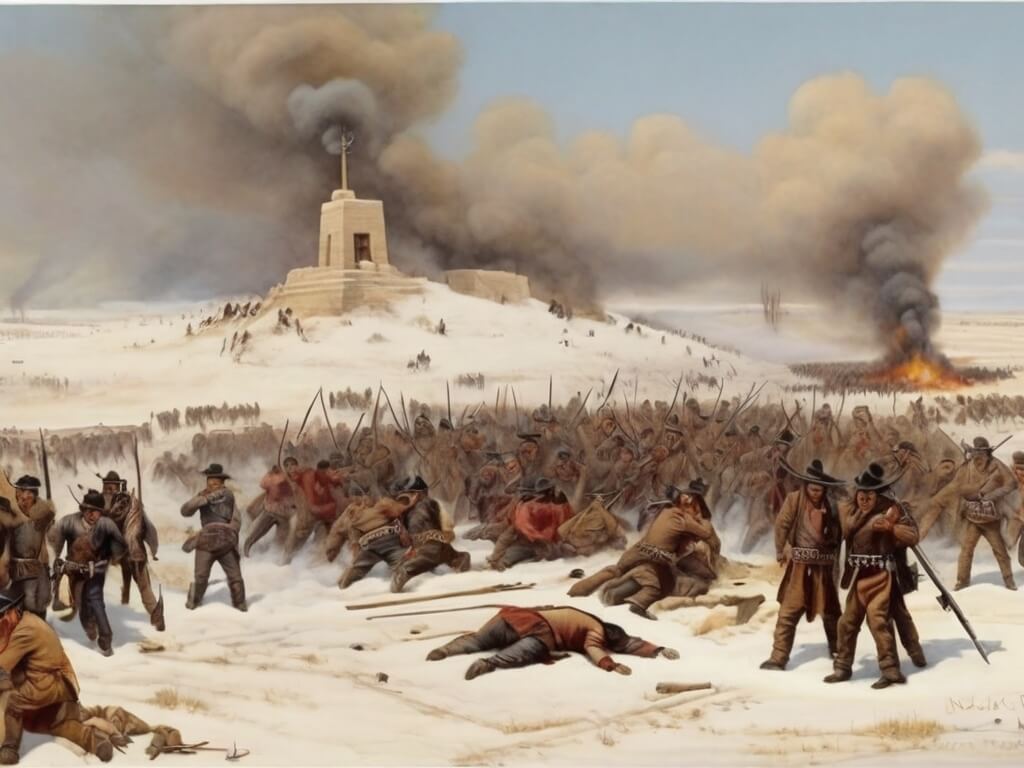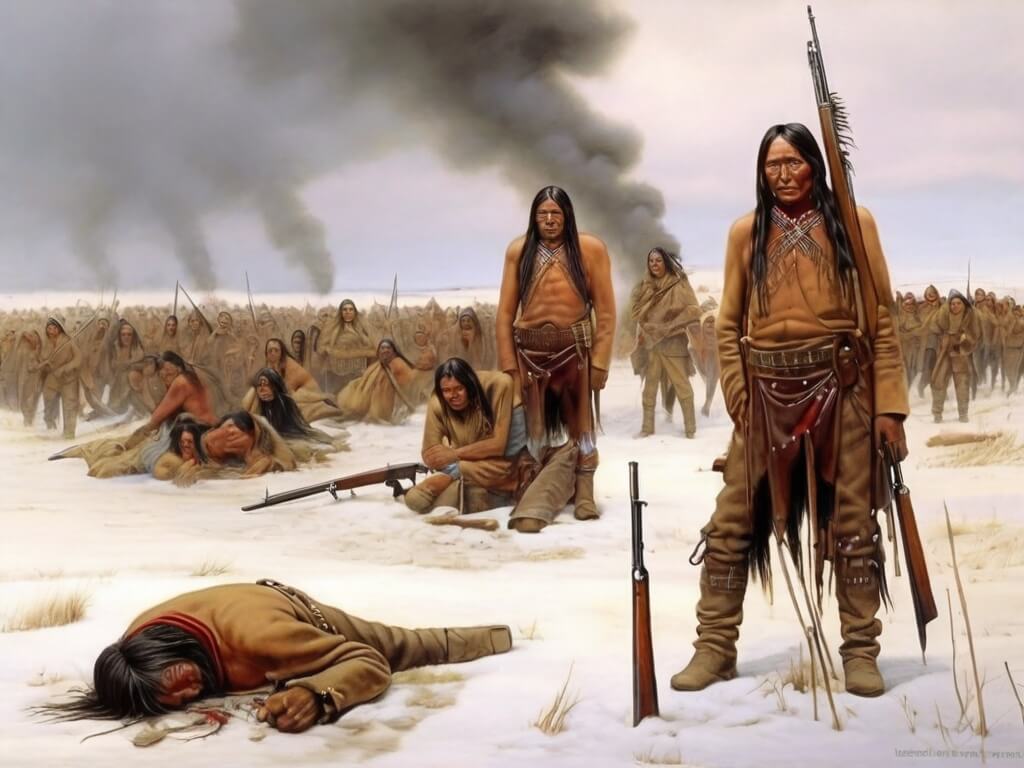Explore the historical events surrounding the Wounded Knee massacre of 1890, the tragic culmination of the Ghost Dance “war” between Big Foot’s Miniconjou Sioux and the U.S. 7th Cavalry. Understand the background, the confrontations, and the aftermath, as well as the enduring significance of Wounded Knee in shaping perceptions of injustice and resistance among Native Americans.

Wounded Knee; was an engagement between Big Foot’s band of Miniconjou Sioux and the 7th U. S. Cavalry at Wounded Knee Creek on the Pine Ridge Reservation, S. Dak., on Dec. 29, 1890.
Wounded Knee marked the culmination of the Ghost Dance “war” of 1890-1891, the last major armed conflict between Indians and whites in the United States. When hunger, disease, loss of reservation lands, and broken government promises left no other hope for a satisfactory life, the Sioux had turned to the Ghost Dance religion proclaimed by the Paiute mystic Wovoka.
In November 1890, alarmed by the dances and the growing militancy of the Indians, the Pine Ridge agent called for troops. Gen. Nelson A. Miles assembled an army ultimately numbering more than 5,000 soldiers and attempted to end the troubles without violence. On December 15, however, Chief Sitting Bull was killed at his camp during an attempt to arrest him. On December 28 the 7th Cavalry intercepted Big Foot and his band of some 350 people, fleeing south to Pine Ridge Agency from their village on the Cheyenne River, and placed them in a camp on Wounded Knee Creek, 20 miles (32 km) northeast of the agency.
On the morning of December 29 the cavalry, about 500 strong and commanded by Col. James W. Forsyth, attempted to disarm the Sioux. Neither side expected or intended to fight, but the confrontation stirred rising emotions. A medicine man incited the young men to resist. Firing broke out. The bloody face-to-face encounter and shots from four small cannon posted on a nearby hill took many lives. The Indian camp was flattened. Sioux casualties were counted at 153 dead and 44 wounded, about half of whom were women and children. Probably 20 to 30 of those who escaped later died of wounds. Big Foot was slain in the first fire. The cavalry lost 25 killed and 39 wounded.

The battle doomed General Miles’ effort to avoid bloodshed. Four thousand Indians stampeded and barricaded themselves in a large camp north of Pine Ridge Agency. But in less than three weeks, by a skillful combination of diplomacy and threatened force, Miles ended the violence. He preferred charges against Colonel Forsyth, but a court of inquiry exonerated him.
Then and later many people regarded Wounded Knee as a massacre. To subsequent generations of Indians, it symbolized the injustices and degradations inflicted on them by the U. S. government. In 1973, militants of the American Indian Movement chose the battlefield as a site to dramatize Indian aspirations. About 200 Indians occupied the village of Wounded Knee and alternately traded shots and negotiated with surrounding federal, state, and tribal law-enforcement officers. Two Indians were killed, several persons were wounded, and the village was almost destroyed. The “Second Battle of Wounded Knee” held public attention for 70 days, until the militants surrendered.